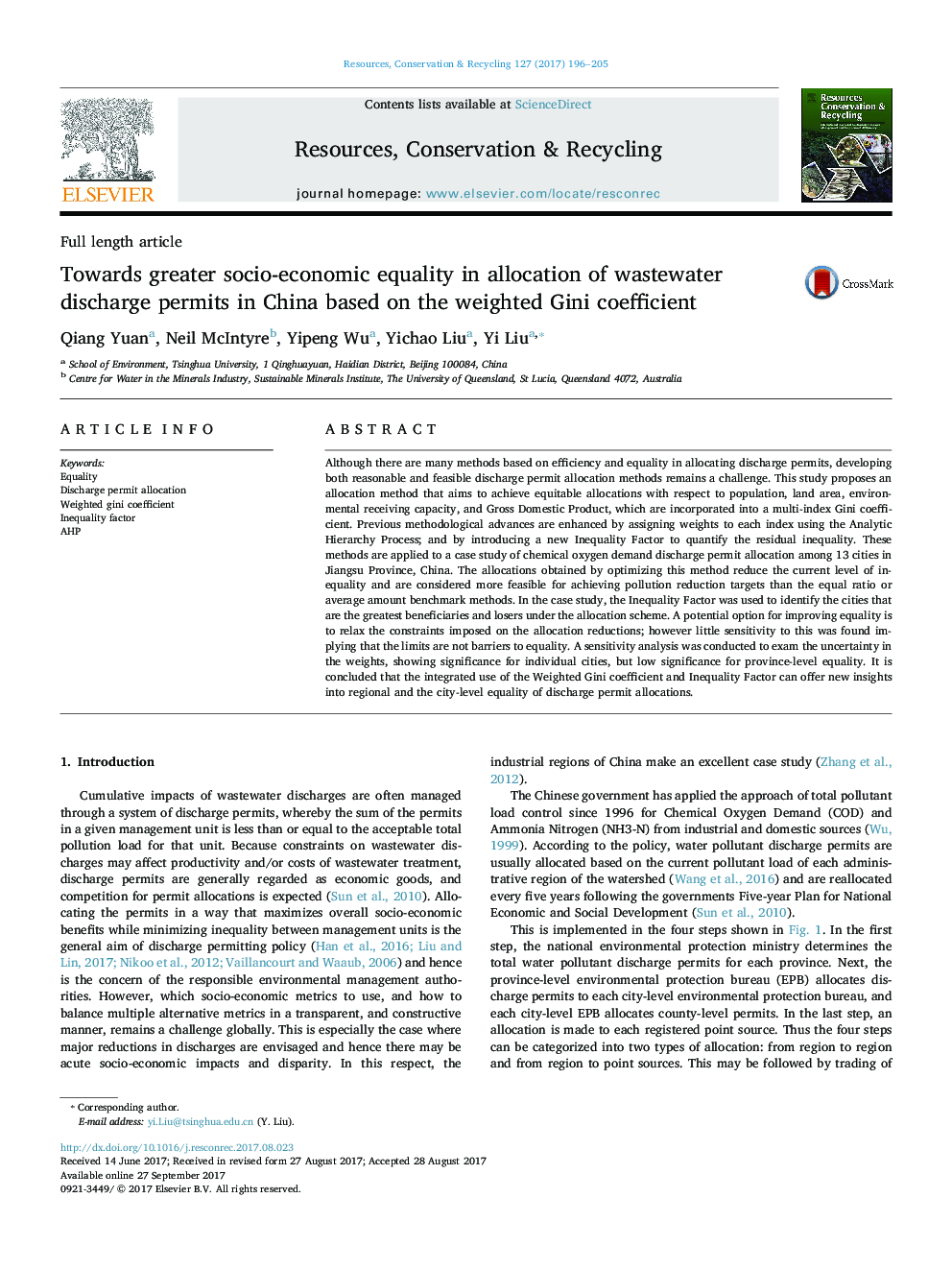| Article ID | Journal | Published Year | Pages | File Type |
|---|---|---|---|---|
| 5118600 | Resources, Conservation and Recycling | 2017 | 10 Pages |
â¢The weighted Gini coefficient approach based on the equality principle was developed for the allocation of discharge permits.â¢A new indicator Inequality Factor was proposed to quantify the residual inequality in the allocation results.â¢A case study was used to demonstrate that this approach can achieve more equality in the allocation issue.â¢The uncertainty analysis on the weights and the constraints was conducted.
Although there are many methods based on efficiency and equality in allocating discharge permits, developing both reasonable and feasible discharge permit allocation methods remains a challenge. This study proposes an allocation method that aims to achieve equitable allocations with respect to population, land area, environmental receiving capacity, and Gross Domestic Product, which are incorporated into a multi-index Gini coefficient. Previous methodological advances are enhanced by assigning weights to each index using the Analytic Hierarchy Process; and by introducing a new Inequality Factor to quantify the residual inequality. These methods are applied to a case study of chemical oxygen demand discharge permit allocation among 13 cities in Jiangsu Province, China. The allocations obtained by optimizing this method reduce the current level of inequality and are considered more feasible for achieving pollution reduction targets than the equal ratio or average amount benchmark methods. In the case study, the Inequality Factor was used to identify the cities that are the greatest beneficiaries and losers under the allocation scheme. A potential option for improving equality is to relax the constraints imposed on the allocation reductions; however little sensitivity to this was found implying that the limits are not barriers to equality. A sensitivity analysis was conducted to exam the uncertainty in the weights, showing significance for individual cities, but low significance for province-level equality. It is concluded that the integrated use of the Weighted Gini coefficient and Inequality Factor can offer new insights into regional and the city-level equality of discharge permit allocations.
